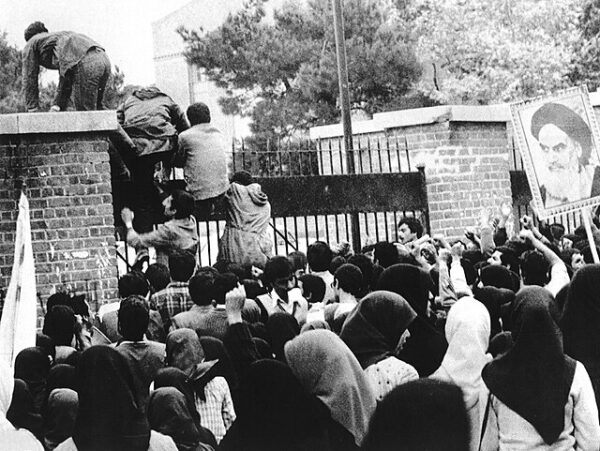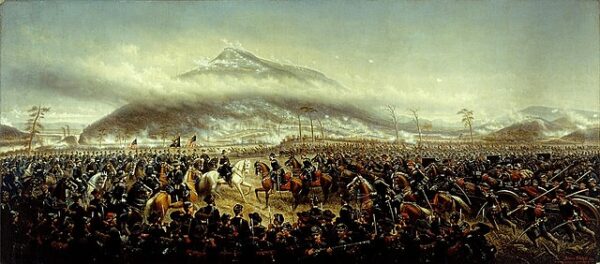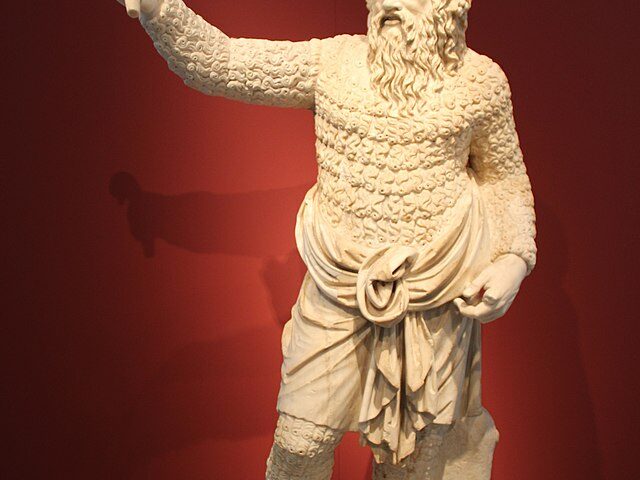On November 4, 1979, a group of Iranian college students stormed the U.S. Embassy in Tehran, Iran, seizing control of the compound and taking approximately 90 people hostage. This crisis unfolded during a period of intense political upheaval in Iran, following the recent overthrow of the pro-American Shah, Mohammad Reza Pahlavi, and the establishment of the Islamic Republic under the leadership of Ayatollah Ruhollah Khomeini. The students, who identified themselves as followers of Khomeini, demanded the return of the Shah from the United States, where he had sought medical treatment. The occupation of the embassy and the ensuing hostage crisis marked the beginning of a 444-day ordeal that would strain U.S.-Iranian relations for decades and reshape Middle Eastern geopolitics.
The students’ takeover of the U.S. Embassy reflected a surge of anti-American sentiment in Iran, largely due to the widespread perception that the U.S. had propped up the Shah’s authoritarian regime. For years, the Shah’s rule had been marked by human rights abuses, corruption, and heavy reliance on Western support, particularly from the U.S. Following his overthrow, many Iranians viewed the United States as complicit in the oppression they had suffered under his rule. The students who seized the embassy saw themselves as revolutionary agents, defending Iran against perceived U.S. interference and imperialism.
The hostages, who included American diplomats, staff, and citizens, were confined in harsh conditions. They endured psychological and physical abuse, including beatings, mock executions, and lengthy periods of isolation. The students quickly released some of the hostages—women, African Americans, and non-U.S. citizens—believing these groups would be sympathetic to their cause. However, the remaining 52 Americans would remain captive for the full duration of the crisis.
In the United States, the hostage situation sparked a media frenzy and became a dominant issue in American politics. President Jimmy Carter, who was already facing a turbulent presidency, faced tremendous pressure to secure the release of the hostages. The administration initially sought diplomatic solutions, working through intermediaries and allies to negotiate with Iran’s new government. However, the situation grew increasingly tense, and Carter eventually approved a risky military operation, known as Operation Eagle Claw, to rescue the hostages. In April 1980, the operation ended in disaster when a helicopter and a transport aircraft collided in the Iranian desert, killing eight American servicemen. The failed rescue mission compounded Carter’s challenges and intensified public frustration.
The crisis became a defining issue in the 1980 U.S. presidential election, where Carter faced Republican challenger Ronald Reagan. Reagan’s campaign capitalized on the perception of Carter’s weak response, ultimately leading to a decisive victory. Many historians argue that the hostage crisis significantly contributed to Carter’s loss, as Americans sought strong leadership amidst the ongoing crisis and economic woes.
Diplomatic efforts continued despite these setbacks, and by late 1980, negotiations through intermediaries began to yield results. After months of indirect talks mediated by Algeria, an agreement was finally reached on January 19, 1981. The terms, known as the Algiers Accords, included the release of the hostages in exchange for the unfreezing of Iranian assets held in the United States and a commitment by the U.S. not to intervene in Iran’s internal affairs. The hostages were released on January 20, 1981—the same day Ronald Reagan was inaugurated as president, marking an end to the 444-day standoff.
The hostage crisis had lasting impacts on both Iran and the United States. In Iran, it solidified the Islamic Republic’s power and validated its anti-Western stance. For the U.S., the crisis exposed vulnerabilities in American foreign policy and ignited debates over Middle Eastern intervention. Relations between the two nations would remain strained for decades, with the hostage crisis lingering as a powerful symbol of mutual mistrust and political animosity.






